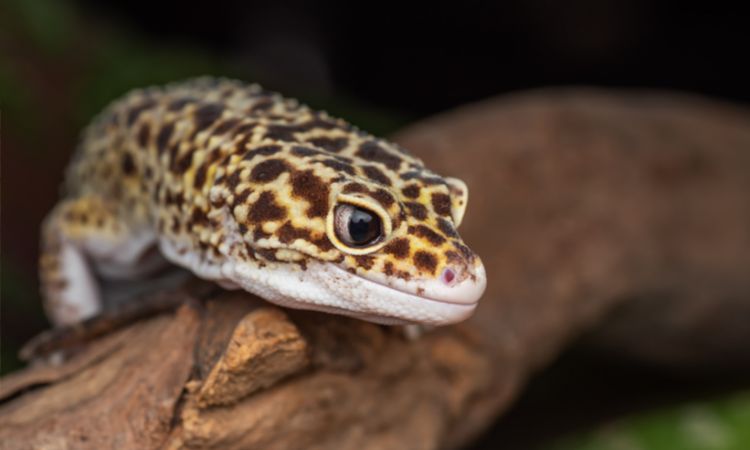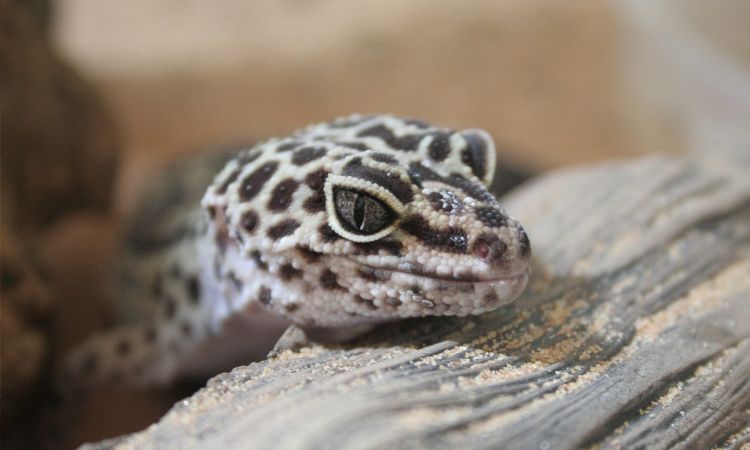If you’ve ever wondered how big your leopard gecko tank should be, you’re not alone. It’s a common question among new gecko owners, and it’s one that has a bit of a complicated answer. In short, the size of your leopard gecko tank will depend on a few factors, including the number of geckos you have and the age of your pet(s). Keep reading to learn more about choosing the right size tank for your leopard gecko.
The size of the tank will depend on how many leopard geckos you have.
Setting up the perfect home for your leopard geckos can be a challenging but highly rewarding process. One of the most important decisions to make is the size of their tank; this will depend on how many geckos you’ll be housing.
Generally speaking, geckos do best in spacious tanks that provide plenty of opportunity to explore and climb, so take note of the number of gecko companions before purchasing a tank.
Keeping geckos together is encouraged as they are a social species, however, too much competition can lead to stress so it’s important to find the right balance when choosing tank size.

If you have one leopard gecko, then a 10-gallon tank is sufficient.
Owning a leopard gecko is a great and rewarding experience. However, when setting up the gecko’s habitat, it’s important to make sure you have the right size tank. A 10-gallon tank is the ideal size for one gecko, as it ensures that there is enough space to provide enough environmental temperature and humidity necessary for a gecko’s health.
Additionally, with enough room, your gecko will be able to create pathways in their environment which can both help them exercise and explore their surroundings.
With proper care and maintenance of the tank, you can have peace of mind knowing your gecko is healthy and secure within its habitat.

If you have two leopard geckos, then a 20-gallon tank is recommended.
Two geckos inhabit one 20-gallon tank, creating an environment of fun and companionship. In the tank, geckos are encouraged to roam with plenty of crevices and hideouts for them to explore.
These geckos can also bask in the warm temperatures that a 20-gallon tank provides. For geckos to thrive, they need adequate space; a 20-gallon tank is recommended as it ensures gecko owners are providing their pets with the space they need.
Leopard Geckos are ground dwelling reptiles and do not require vertical space, so don’t get a tall tank.
Leopard geckos are a great reptile pet for the beginner keeper because they don’t require specialized caging. These ground dwelling geckos inhabit rocky hillsides, so when it comes to tank size, what counts isn’t height but surface area.
A wide, shallow 15-20 gallon tank is ideal for adult geckos, enough to house several geckos if desired. If providing multiple geckos with good space is your goal, look into large terrariums measuring up to 36 inches in length instead of a traditional high-tall aquarium tank.
With proper substrate and hiding spots available, this should be enough space for geckos to remain happy and happy geckos make for healthy gecko owners.
A wider tank is better than a taller one because it allows your leopard gecko to thermoregulate more effectively.
When it comes to giving your gecko the best environment possible, an important factor to consider is the tank’s dimensions. A wider tank allows your gecko plenty of space to explore and move around while it continues to heat up or cool down its body temperature, an essential process known as thermoregulation.
With a tall tank, the gecko is likely unable to move around enough to balance its own temperature between areas of hot and cold. When provided with adequate surface area for exploration, geckos experience healthier and more comfortable home environments!

When in doubt, always go with a larger size tank size
When it comes to gecko tanks, size does matter-not just for the gecko’s comfort, but for their health and wellbeing. Going with a larger tank will ensure geckos have plenty of room to roam and explore, and that crucial thermoregulation for shedding and digestion can occur.
Keep in mind geckos will eat more if there is extra space to move around in their enclosure, something that may be difficult in a too small tank.
With a larger tank you are also giving yourself the option to add bigger and better decor pieces, or even other geckos if you plan on introducing company down the road. In conclusion, when you’re debating between sizes and are not sure what to go with-always opt for bigger as it is much better for your gecko’s health!
Now that you know how to pick the perfect tank for your leopard gecko, it’s time to get shopping! Remember, the size of the tank will depend on how many leopard geckos you have. If you have one leopard gecko, then a 10-gallon tank is sufficient.
If you have two leopard geckos, then a 20-gallon tank is recommended. Leopard Geckos are ground dwelling reptiles and do not require vertical space, so don’t get a tall tank. A wider tank is better than a taller one because it allows your leopard gecko to thermoregulate more effectively. When in doubt, always go with a larger size tank because it’s better for your leopard gecko’s health and wellbeing.
In conclusion, leopard geckos can thrive in a variety of environments, but they need the proper habitat to do so. A tank size that is at least 20 gallons is best for one leopard gecko. For every additional gecko, add 10-20 gallons more. It’s important to keep the enclosure clean and provide plenty of hideouts and climbing opportunities with rocks, branches, and logs.

Hi – I’m Erika, the lead gecko enthusiast here at Geckopedia! I write articles about pet geckos, including what to feed your leopard gecko and how to help your pet gecko live a long, happy life! I graduated with advanced degrees from UC-Berkeley, the University of Southern California (USC) and Indiana University-Bloomington, where I studied Biology and Animal Science. I use my experience to help others learn about gecko care, and I am an advocate for all topics gecko related!
